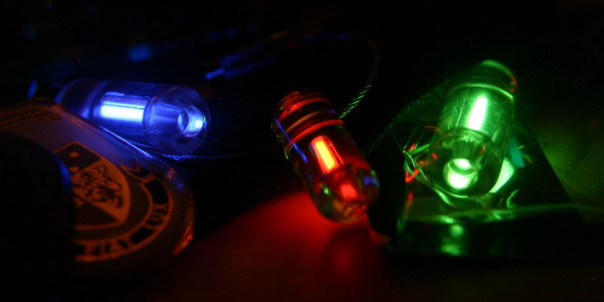Radioluminesence is the emission of light due to bombardment by ionising radiation, the most common example of which is tritium illumination. Tritium is an isotope of hydrogen, made up of one proton and two neutrons (i.e. it is hydrogen-3). It has a half-life of 12.3 years and decays by emitting beta particles (high speed electrons) to form helium-3.
In a tritium illumination light source the tritium gas is trapped in a glass tube that has been coated on the inside with a phosphor. When the gas decays, the electrons produced strike the phosphor and their kinetic energy is transferred into light energy. By choosing different phosphors, different colours of light are produced.

Novelty keychains containing tritium light sources.
Because tritium illumination requires no power source and lasts for a long time, it is commonly used in situations where long-term but low-power lighting is required. For example, tritium illumination is used on watchfaces, compasses, instrument dials and gunsights. The encapsulation of the tritium source prevents any radiation risk, and if a tritium light source is broken open then simply leaving the area and allowing the gas to disperse will mitigate any health risks.